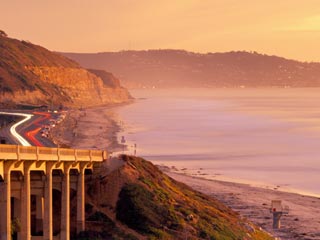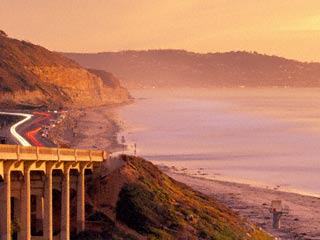Home Search Gallery How-To Books Links Workshops About Contact
| Digimarc,
Watermarking and Image Degradation What is Digimarc? Digimarc is one of many systems that adds a special kind of additional film grain or noise to an image in order to identify that image. The industry refers to this and many similar processes as "watermarking." A program like Photoshop can read this special grain pattern and link you back to Digimarc's website, and if the person who added this grain to their image is paying their bills to Digimarc, Digimarc will link you back to the creator's website. Is it invisible? The makers of these systems claim invisibility, however if you know what it looks like you can easily see it as shown below. Even worse, adding watermarks increases the file size of JPEG images, or requires you to reduce their quality to retain the same size file. That's very bad and very visible if you are a web designer straining for the best quality with the shortest download speeds. The Digimarc system seems fairly primitive because it seems to add the grain equally in all parts of the image. Therefore it is easy to see in flat areas like the sky. More advanced systems, like the ones done by Tektronix for video are smart enough to hide the grain in areas that are less visible. The additional grain of the watermark requires extra bits when saving as a JPEG file. Therefore your file sizes have to grow to keep the same quality you have without the watermark, or image quality suffers if you save at the same file size. I have found that file size needs to grow by a whopping 40% to retain the same freedom from artifacts that one had without the watermark. Can it be removed from an image? Yes. The watermark can be removed from an image the same way you remove film grain. I have not experimented much with this, however a simple Gaussian blur of 2 pixels cleaned it right up when I tried. Of course that blurs your image. If I really cared about this I'd experiment with an "action" in Photoshop that blurred the smooth areas more than the textured areas. That probably would allow removing the watermark without making the image as bad as a 2 pixel Gaussian blur. Unfortunately even though this eliminates the Digimarc, it does not restore the original quality of the image. Try "Grain Surgery" as possibly a much better way to remove noise and watermarks. It looks very interesting although I have not tried it. How does Digimarc degrade quality? The addition of more film grain or noise is the lesser of the two ways Digimarc degrades images. Most people except we artists would not notice the added grain alone. It is clearly visible if you go into the history palette of Photoshop and look at before and after, but the Digimarced image by itself before saving as a JPEG for the Web has no obvious defects other than added grain. Heck, some people like grain and certainly can use the Digimarc filter as another way to get a particular look. What makes Digimarc really nasty is that this added grain requires larger file sizes when compressed as JPEG files for the Internet. This is because, to simplify a great deal, one needs to add extra bits to the .jpg file to encode each additional speck of added grain. That means your images will take longer to download if you try to maintain the same quality after adding the grain, or will look nastier if you retain the same JPG file size by lowering the quality setting in your software to retain the original file size. If one keeps the same file size when saving as a JPG by using a lower quality setting, the quality goes down more than the small reduction in quality setting implies. This is because some of the bits now (about 10-30% if you use a level 3 digimarc as standard for the Internet) are wasted encoding the grain that represents the watermark data, instead of representing the important parts of your image. Even though I only have to reduce the quality setting in Imageready from 50 to 48 to keep about the same file size, because of the bits wasted encoding the noise the actual quality is more like me having saved it with a quality setting of about 35. From my simple tests one needs a file size 40% bigger with Digimarc to retain about the same freedom from JPG artifacts, although the additional grain is still there. You can play with this yourself in Photoshop with your own images.
The first image is without any Digimarc. It comes from a clean high-bit scan from 4x5 film and reduced greatly to 320x240 pixels. It was converted to 8 bits per channel in Photoshop 6 and then "saved for web" in Imageready 3.0 at quality 50, giving a file size of 13.23 k. Your browser has been altered by KenRockwell.com to display these files at twice their normal size to make them easier to see. The second image was the same, except that a Digimarc was added at the standard level 3 in Photoshop. The image was then "saved for web" at a lower quality level of 48 in order to keep the file size close to what it was without the Digimarc. Saved at the same quality level 50 the file size goes up 5.6%, however the image is still poorer because bits are wasted encoding the noise. Without the Digimarc, the file size of the image that looks about as good as fig. 2.) has a file size of only 9.5k! Because bits are wasted trying to encode the additional grain the overall image quality overall suffers. These defects are subtle. They become much more obvious after you learn to see them the first time. They are: 1.) Much more grain or grittiness in the digimarced image. This is most visible in the flat sky and water. Engineers call this "noise." 2.) There is more grain around the edges of objects, especially the line between the mountain and sky. This artifact is called "mosquito noise" by engineers. 3.) There is "blockiness" in some areas, especially in the water, along the closest shoreline and in the texture of the far mountain. You are starting to see boxes of 8x8 pixels as separate blocks that no longer merge seamlessly with the others. Engineers call this "blocking." Digimarc requires you trade image quality and file size for the ability to identify your work. Then why use Digimarc? Beats me. The disadvantages are many, and the only advantage is that you can use it to look for your watermark later. Big deal! You are far better off burning in your "bug" or logo in the corner as we often do in TV. This way you don't degrade any of the image except the place you put your bug, AND your ID is visible to everyone. Both the Digimarc and visible bug can be removed easily by the devious. The only purpose I can see for watermarking is for passing secret messages. I see no cases ever, even at Digimarc's site, in which anyone benefited from it. If anyone ever had caught an image thief I'm sure Digimarc would tell us. Dan Heller also has some experience here. |


